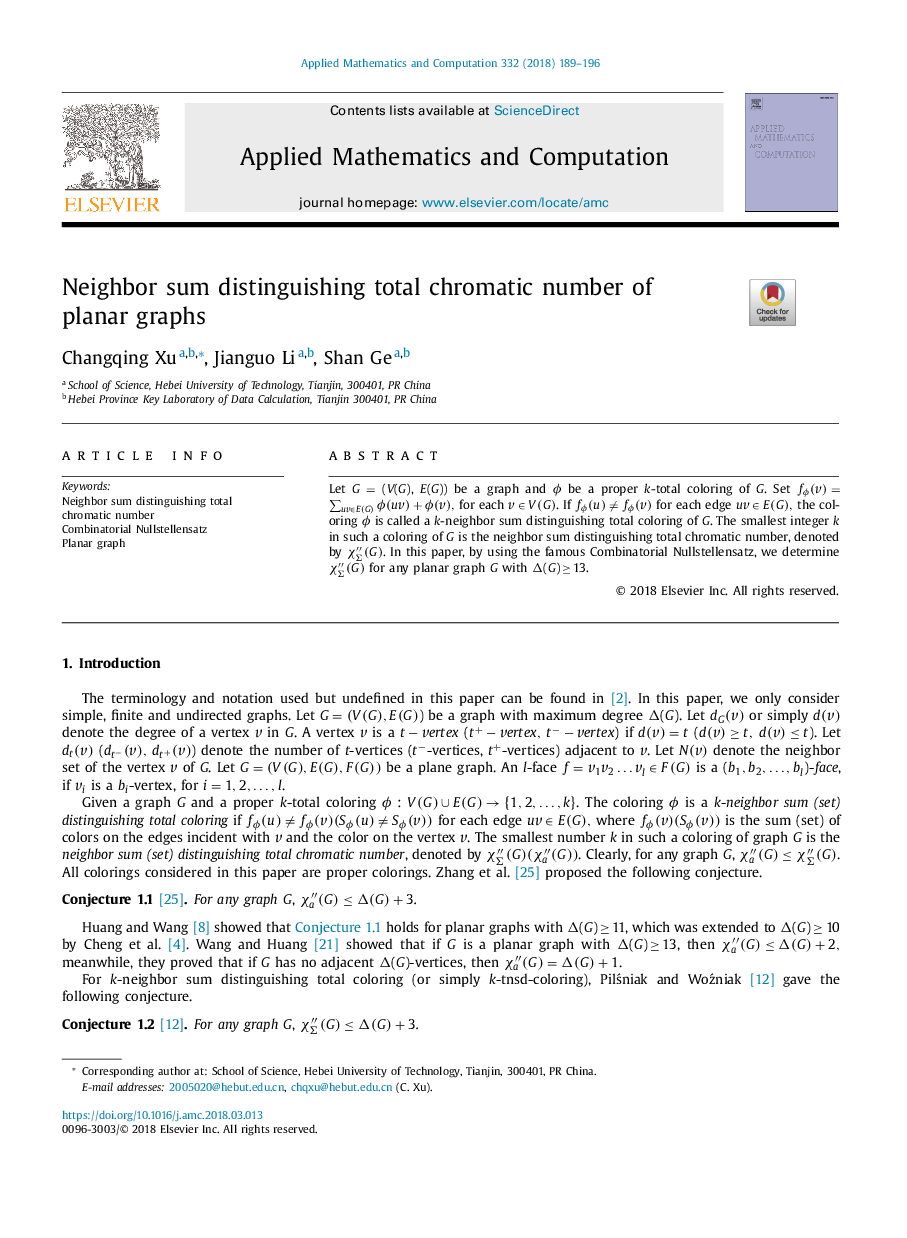| Article ID | Journal | Published Year | Pages | File Type |
|---|---|---|---|---|
| 8900930 | Applied Mathematics and Computation | 2018 | 8 Pages |
Abstract
Let G = (V(G), E(G)) be a graph and Ï be a proper k-total coloring of G. Set fÏ(v)=âuvâE(G)Ï(uv)+Ï(v), for each vâ¯ââ¯V(G). If fÏ(u)â¯â â¯fÏ(v) for each edge uvâ¯ââ¯E(G), the coloring Ï is called a k-neighbor sum distinguishing total coloring of G. The smallest integer k in such a coloring of G is the neighbor sum distinguishing total chromatic number, denoted by ÏΣâ³(G). In this paper, by using the famous Combinatorial Nullstellensatz, we determine ÏΣâ³(G) for any planar graph G with Î(G)â¯â¥â¯13.
Related Topics
Physical Sciences and Engineering
Mathematics
Applied Mathematics
Authors
Changqing Xu, Jianguo Li, Shan Ge,
